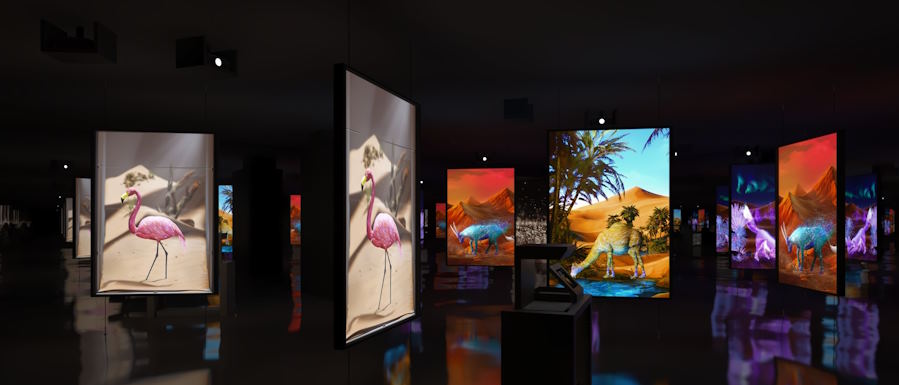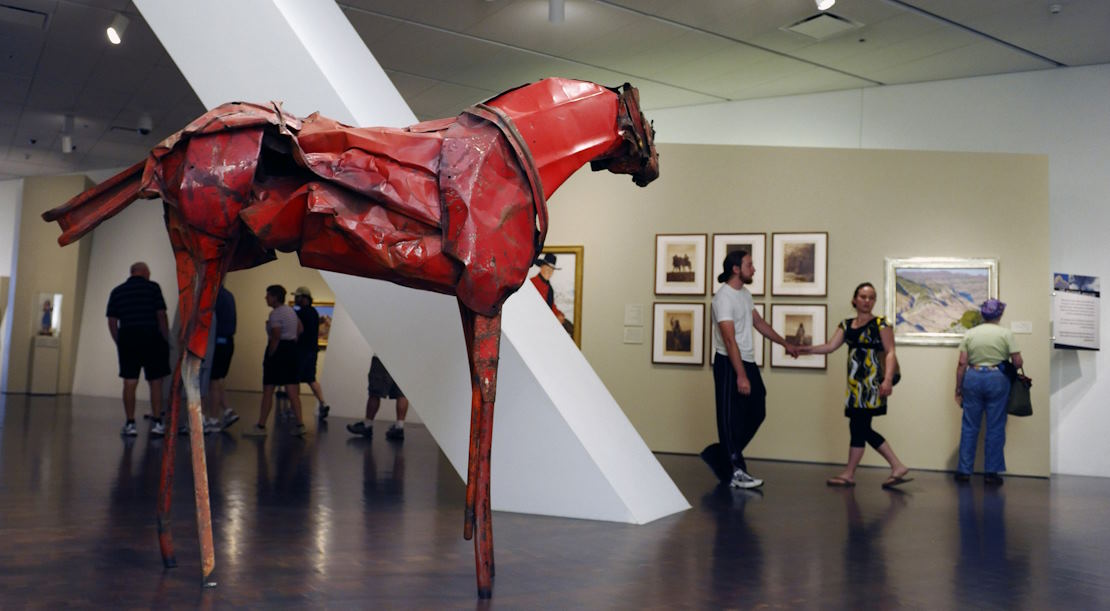
What if you could walk into an art gallery and feel like you’re inside the artwork itself? That’s the essence of interactive art exhibitions! These immersive experiences break the boundaries of traditional art displays, inviting you to explore and engage with art through all five senses. Picture walking through a colorful light display, hearing an ambient soundscape, or even smelling the art as you interact with it. If you’re intrigued by how art can be more than just a visual treat, you’re in the right place. Let’s uncover the wonders of interactive art exhibitions that captivate and engage every sense!
What Makes an Art Exhibition “Interactive”?
So, what’s the big deal about interactive art exhibitions? You might be wondering how they differ from traditional art galleries where you simply admire the art from a distance. Imagine going to a concert where you’re not just listening to the music but also seeing it, feeling it, and maybe even being a part of it. That’s the essence of interactive art exhibitions!
The Five Senses of Interactive Art
Let’s break down the five senses and see how they come into play in these art experiences:
| Sense | What It Involves | Example | Experience |
| Sight | Visual elements like light and color | Yayoi Kusama’s Infinity Rooms | Walking through a room of endless lights and mirrors. |
| Sound | Audio elements like soundscapes | Ryoji Ikeda’s “data.scan” | Immersive sound installations that respond to your movements. |
| Touch | Physical interaction with art | Touchable sculptures or floor designs | Feeling textures and shapes of artworks. |
| Smell | Olfactory experiences | Sissel Tolaas’ scent-based installations | Smelling scents that evoke memories or moods. |
| Taste | Edible art experiences | The Museum of Ice Cream | Tasting art-related treats like ice cream in a colorful setting. |
These elements come together to create an art experience that’s engaging and memorable. It’s like a recipe for an unforgettable experience, where every sense gets a taste of the action!
Types of Sensory Interactions in Art Exhibitions
Visual Engagement
Think of visual art as the tip of the iceberg. In interactive exhibitions, visuals are just the beginning. For example, Yayoi Kusama’s Infinity Rooms are a feast for the eyes. You walk into a room filled with mirrors and LED lights, and it feels like you’re in a never-ending universe of colors and patterns. It’s like being inside a kaleidoscope where every angle offers a new visual experience.
Why does this matter? Engaging visuals grab your attention and set the stage for the rest of the sensory experience. When you see something beautiful or intriguing, it draws you in and makes you want to explore further.
Auditory Experiences
Imagine walking into a gallery and hearing not just music, but sound that seems to move with you. In exhibitions like Ryoji Ikeda’s “data.scan”, sound installations create a sonic environment that evolves based on your interactions. It’s like the art is talking to you through a symphony of digital data and sounds.
Why is sound important? Audio elements can evoke emotions and set the mood, enhancing the overall experience. The right sound can make you feel peaceful, excited, or even curious.
Tactile Interactions
Have you ever wanted to reach out and touch a painting? Some interactive art allows you to do just that. For instance, you might find touchable sculptures or interactive floor designs where you can feel different textures and shapes.
Why does touch matter? Physical interaction helps you connect with the art on a deeper level. It’s like feeling the texture of a fabric or the surface of a stone—touch brings art to life in a way that seeing alone cannot.
Olfactory Elements
Smell isn’t usually the first thing you think of in an art gallery, but it can be a powerful part of the experience. Artists like Sissel Tolaas use scents to enhance their installations. Imagine walking through an art exhibit and catching a whiff of fresh rain or old books.
Why is smell so special? Scents can trigger memories and emotions. A familiar smell can take you back to a moment or place, making the art experience more personal and evocative.
Taste
Taste might seem like a stretch for art exhibitions, but it’s more common than you think. The Museum of Ice Cream combines visual art with ice cream tasting, turning the art experience into a fun, sensory event.
Why include taste? Adding food to the mix makes the experience more interactive and enjoyable. It’s like having a meal where the ambiance adds to the flavor!
The Impact of Multisensory Art Exhibitions
Personal Connection
Have you ever had a meal where every element—the taste, smell, and presentation—felt perfectly in sync? That’s the kind of connection multisensory art can create. When art engages all your senses, it can create a more profound and personal experience.
Emotional Responses
How does an art exhibition make you feel? Multisensory experiences can evoke a range of emotions, from joy and wonder to nostalgia and reflection. The combination of sight, sound, touch, and smell can stir your feelings in ways that a simple visual display might not.
Memorability
Think back to your favorite art experience. Was it just the art itself, or the whole experience? Multisensory art installations are often memorable because they engage you on multiple levels, making the experience stick with you long after you’ve left.


